13 Most Lucrative Nut Trees (with Profit Breakdown)
Are you searching for a way to boost your income from farming or simply looking to make a profitable investment in your backyard? Look no further than nut trees. These lucrative crops fetch high prices in the market and provide multiple opportunities for revenue streams. For instance, walnut trees provide valuable timber in addition to annual revenue in the form of nuts. Furthermore, many nut trees are easy to cultivate, making them an excellent choice for first-time growers.
The ever-popular almonds and chestnuts, and the lesser-known macadamias, are versatile trees that can help diversify your farm or enhance your property value. Black Walnut, Pecan, Hazelnut, Pistachio, Cashew, English Walnut, Heartnut, Pine Nut, Brazil Nut, Beech-Nut are also on the list of the most lucrative nut trees.
As you read on, you'll discover the unique characteristics of each nut tree and how their specific market demands contribute to their overall profitability. Pine nut trees, for example, can produce a high price per pound due to their scarcity and unique flavor, which can increase profitability.
Summary
- Tree growth rates, local market conditions, growing practices, and other factors will influence your earnings.
- Hazelnuts, heartnuts, and brazil nuts are relatively easy to grow and can be harvested mechanically, which can reduce labor costs.
- Hazelnuts, chestnuts, and beech nuts are known for their low maintenance requirements, which can reduce production costs.
- The tree species of pecan, almond, macadamia nuts, hazelnuts, chestnuts, pistachios, English walnuts, heartnuts, Brazil nuts, and beech nuts can produce high yields of nuts per acre.
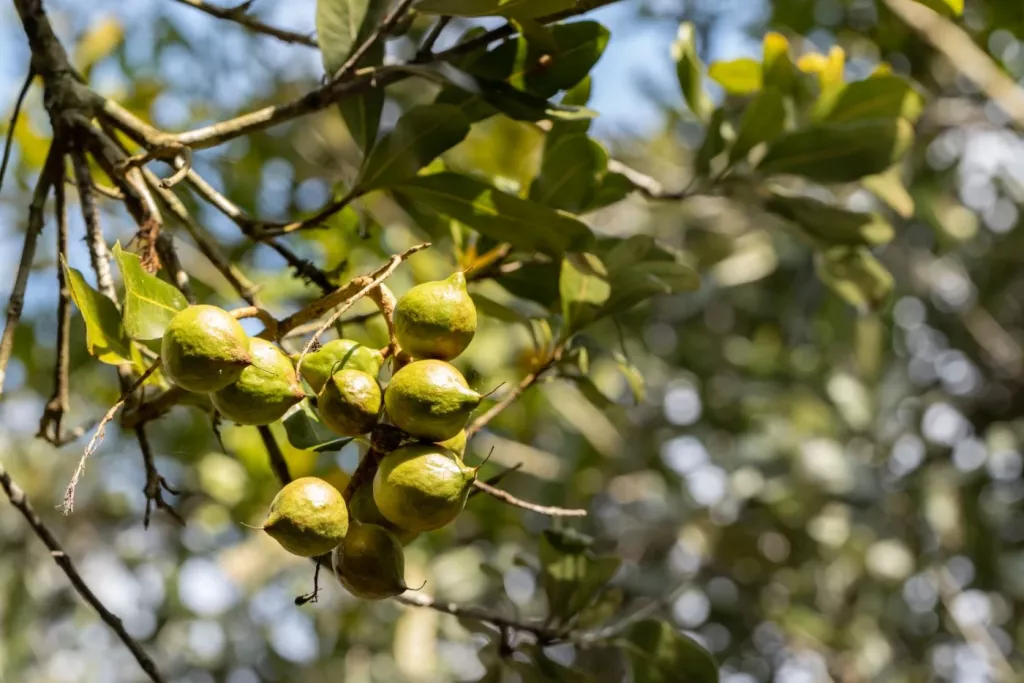
Profit Breakdown of Nut Trees
| Nut Tree Species | Market Price per Pound | Cost of Production | Profit per Pound (market price-production cost) |
|---|---|---|---|
| Black Walnut | $15–$20 | $1.50 to $2.50 | $13.50–$17.50 |
| Pecan | $3–$4 | $1.50 to $2.50 | $1.50 |
| Almond | $5–$6 | $2.50 to $3.50 | $2.50 |
| Macadamia | $7–$10 | $4.00 to $5.00 | $3–$5 |
| Hazelnut | $3–$4 | $2.50 to $3.50 | $0.50 |
| Chestnut | $3–$8 | $1.50 to $2.50 | $1.50–$5.50 |
| Pistachio | $5–$6 | $3.50 to $4.50 | $1.50 |
| Cashew | $6–$9 | $2.50 to $3.50 | $3.50–$5.50 |
| English Walnut | $2–$4 | $1.50 to $2.50 | $1.50 |
| Heartnut | $2–$3 | $1.50 to $2.50 | $0.50 |
| Pine Nut | $8–$12 | $3.00 to $5.00 | $3–$9 |
| Brazil Nut | $3–$4 | $2.50 to $3.50 | $0.50 |
| Beech Nut | $2–$3 | $1.50 to $2.50 | $0.50 |
Black walnuts are often sold at a premium

Black walnuts are a highly valued hardwood tree known for their rich flavor and are in high demand for both their nuts and valuable lumber. You can expect to earn around $15–$20 per pound for the nuts, while the timber can fetch up to $1,000 per thousand board feet.
The nuts are in high demand due to their unique flavor and are often sold at a premium price. Black walnut trees are also highly resilient to pests and diseases, which can reduce production costs and increase profitability.
Pecans produce high yields
Pecans are a popular nut with a wide range of culinary uses. They have a market value of around $3–$4 per pound, and given their high yields, you can potentially earn several thousand dollars per acre.
Pecan trees are known for their high yield and high selling price. They are relatively easy to grow and are in high demand in the food industry due to their nutritional value and unique flavor. Pecans can be sold as raw nuts or used in a variety of recipes, which can increase their profitability.
Almonds have a high demand in the food industry
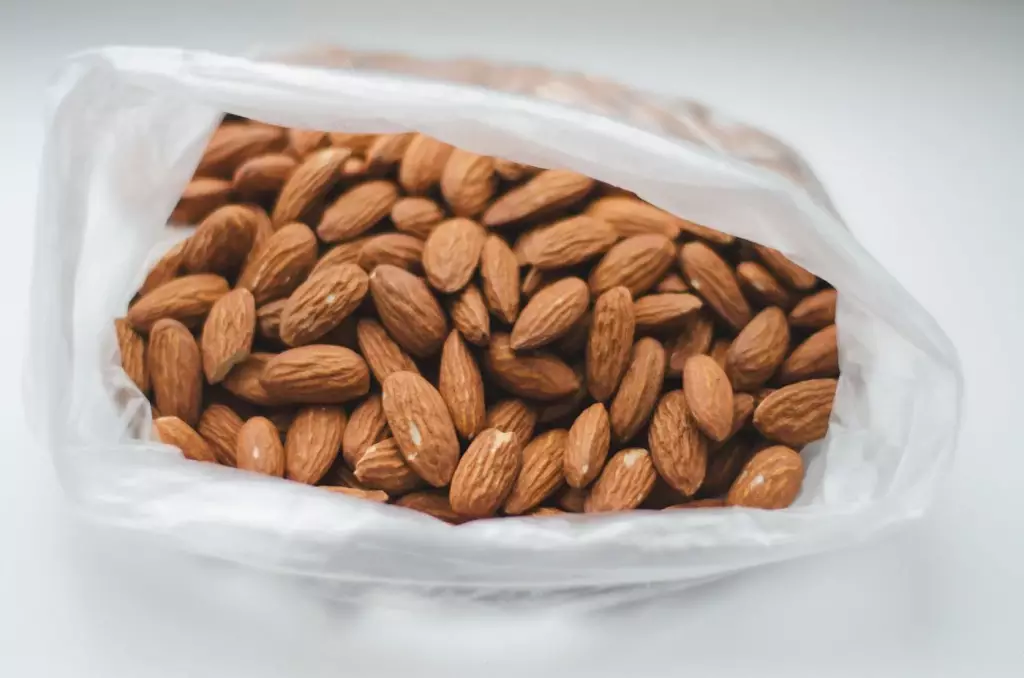
Almonds are one of the most commonly grown nut trees, with a high yield and selling price. They may generate around $5–$6 per pound, making them a profitable option for growers.
Almonds are a highly popular nut that is used in a variety of food products, from almond milk to snacks. They have a high demand in the food industry due to their nutritional value and unique flavor. Almond trees can produce high yields of nuts per acre, which can increase profitability.
Macadamia nuts are often used in high-end food products
Macadamia nuts are known for their high market value, fetching around $7–$10 per pound. However, they require specific growing conditions and take longer to mature, which should be taken into consideration for your investment.
Macadamia nuts have a high price per pound due to their unique flavor and scarcity. They are often used in high-end food products and are in high demand in the food industry. Macadamia trees can be relatively easy to grow and can produce a high yield of nuts per acre, which can increase profitability.
Hazelnuts can be harvested mechanically

Hazelnuts, also known as filberts, can generate about $3–$4 per pound, making them a profitable option for small-scale growers. They are relatively low maintenance and ideal for mixed-crop orchards.
Hazelnuts are a popular nut in the food industry due to their unique flavor and versatility. They are often used in confectionery and baked goods. Hazelnut trees can produce a high yield of nuts per acre, which can increase profitability. They are also relatively easy to grow and can be harvested mechanically, which can reduce labor costs.
Chestnuts have low maintenance requirements
Chestnuts have a high market potential, with prices ranging from $3 to $8 per pound. Their low-maintenance nature and versatility make them a great choice for first-time growers.
Chestnut trees are known for their high yield of nuts per acre. They are also relatively easy to grow and can produce a valuable nut crop. Chestnuts are often used in confectionery and baked goods and are in high demand in the food industry.
Pistachio is used in a variety of food products
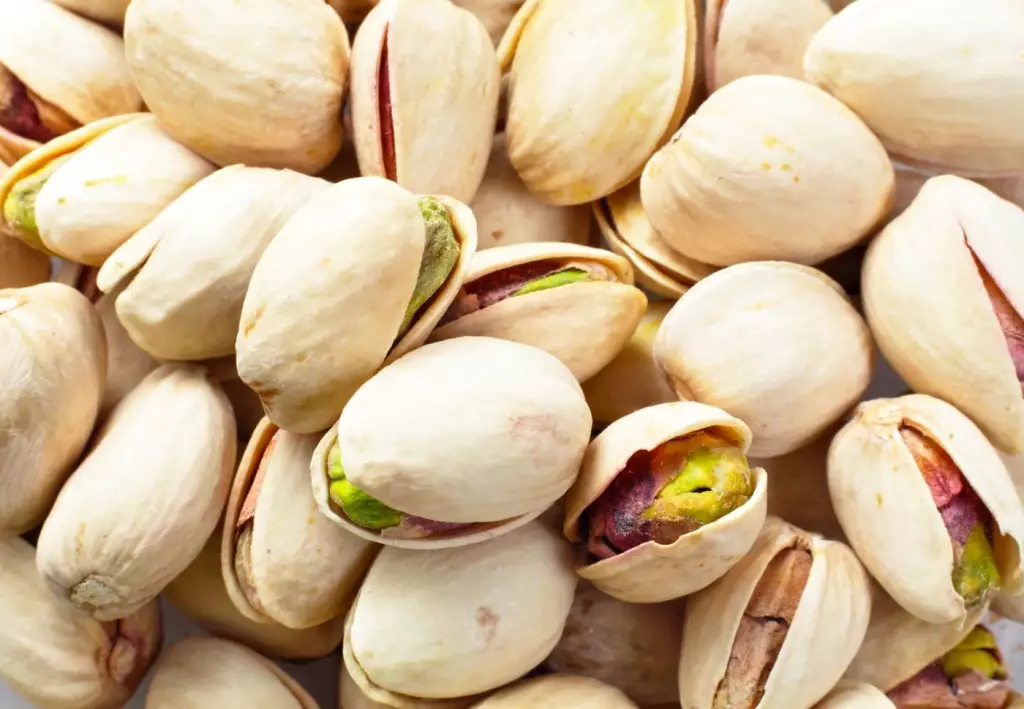
Pistachios can be incredibly profitable, often selling for around $5–$6 per pound. However, they require specific growing conditions and take longer to mature, so it's essential to consider these factors before investing.
Pistachios are a highly popular nut that is used in a variety of food products, from snacks to ice cream. They have a high demand in the food industry due to their nutritional value and unique flavor. Pistachio trees can produce high yields of nuts per acre, which can increase profitability.
Cashews produce a valuable byproduct
Cashews can fetch a high market value, ranging from $6 to $9 per pound. They require specific growing conditions, so be sure to research the specifics for your region before planting.
Cashews are a popular nut that is used in a variety of food products, from snacks to curries. They are in high demand in the food industry due to their unique flavor and nutritional value. Cashew trees can also produce a valuable byproduct, cashew apple, which can be used to make juice, jam, or vinegar, increasing their profitability.
English walnuts are generally easy to grow

English walnuts can generate between $2 and $4 per pound, making them a modestly profitable choice for growers. They have a wide range of culinary uses and are generally easy to cultivate.
English walnuts are a popular nut that is used in a variety of food products, from baked goods to ice cream. They are in high demand in the food industry due to their unique flavor and nutritional value. English walnut trees can produce high yields of nuts per acre, which can increase profitability.
Heartnuts have a unique appearance and flavor
Although heartnuts are less known, they are considered a close relative of the walnut tree. They have a sweet, mild flavor and can generate around $2–$3 per pound, making them a niche option for small-scale growers.
Heartnuts are a type of walnut that has a unique heart shape and a mild, sweet flavor. They are in high demand in the food industry due to their unique appearance and flavor. Heartnut trees can produce a high yield of nuts per acre, which can increase profitability. They are also relatively easy to grow and can be harvested mechanically, which can reduce labor costs.
Pine nuts have a high price due to their scarcity
Pine nuts are a luxury nut known for their high price point. They can fetch between $20 and $40 per pound, but their harvest is labor-intensive. This factor needs to be considered when determining their profitability.
Pine nuts are a popular nut that is used in a variety of food products, from pesto to snacks. They are in high demand in the food industry due to their unique flavor and nutritional value. Pine nut trees can produce a high price per pound due to their scarcity and unique flavor, which can increase profitability.
Brazil nut has a unique flavor and texture
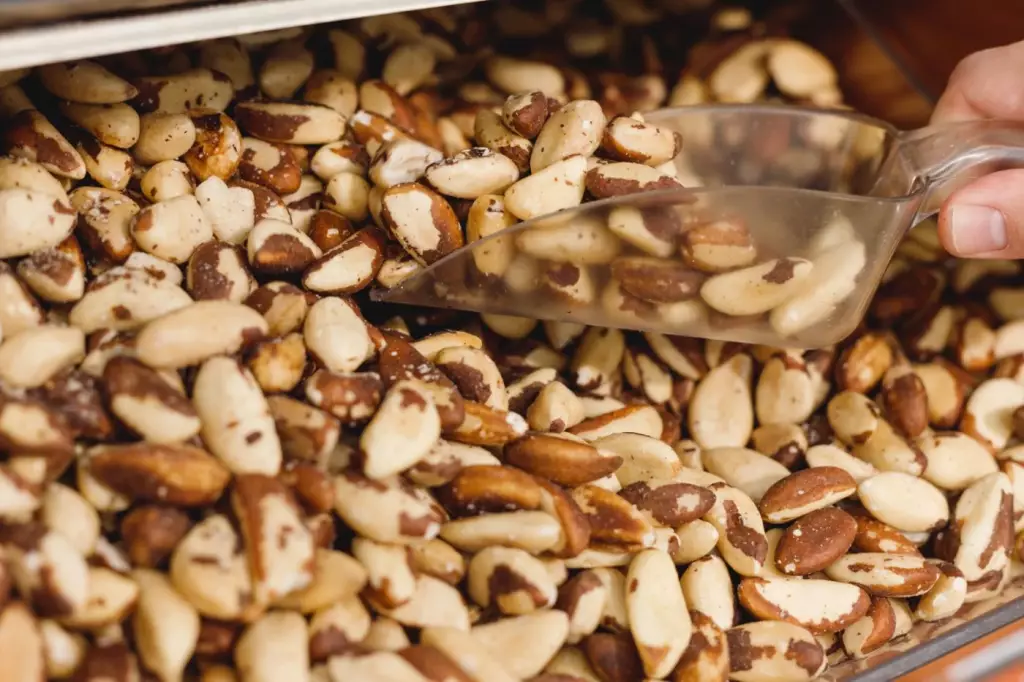
Brazil nuts are not as widely grown but can generate around $3–$4 per pound. They require specific growing conditions, and it's essential for you to research these requirements before planting.
Brazil nuts are a type of nut that is native to the Amazon rainforest and has a unique flavor and texture. They are in high demand in the food industry due to their scarcity and unique flavor. Brazil nut trees can produce a high yield of nuts per acre, which can increase profitability. They are also relatively easy to grow and can be harvested mechanically, which can reduce labor costs.
Beech nuts can be used in various culinary applications
Beech nuts are tiny, sweet nuts that can be used in various culinary applications. Their profitability is relatively low, generating about $2–$3 per pound. However, they are an easy-to-grow option that can be a good choice for small-scale or diversified growers.
Beech nuts are a type of nut that is often used as a substitute for coffee due to their similar flavor profile. They are in high demand in the food industry due to their unique flavor and versatility. Beech-nut trees are relatively easy to grow and can produce a high yield of nuts per acre, which can increase profitability. They are also known for their low maintenance requirements, which can reduce production costs.
Factors that Influence Profitability of Nut Trees
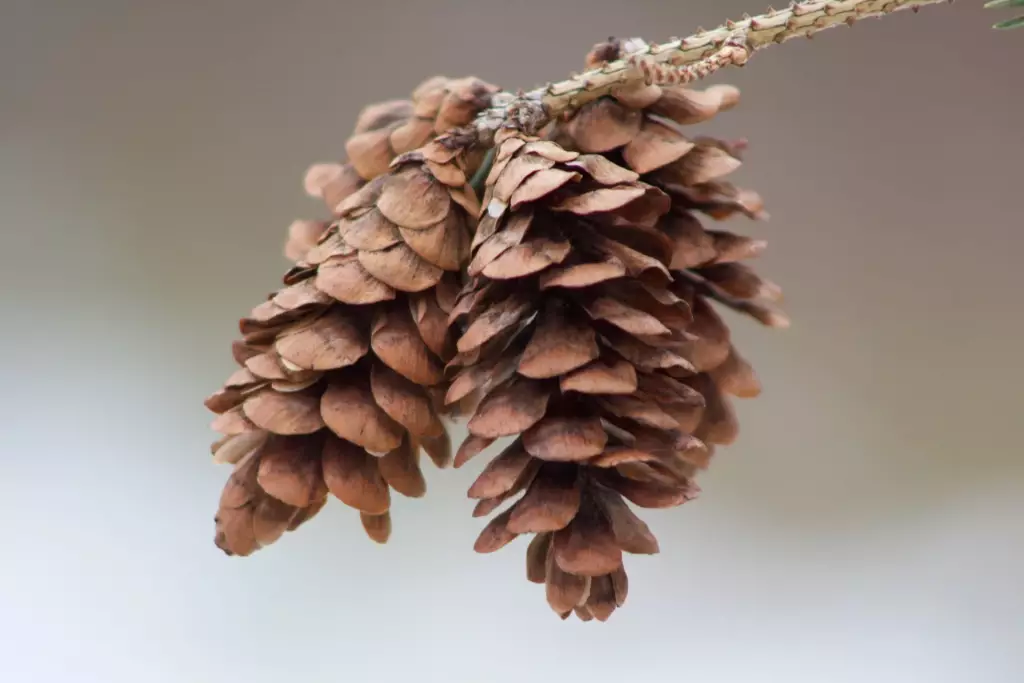
Nut tree growth rates
The growth rate of different nut trees helps determine how quickly you can expect your investment to start providing returns. Faster-growing trees generally start producing nuts earlier, increasing your income over a shorter time frame. Conversely, slower-growing trees might provide higher-quality timber or nuts, but they often require more patience.
Climate and soil requirements of nut trees
Research the ideal conditions for the particular nut trees you're considering, and make sure your location meets those requirements. Keep in mind that some species may be more adaptable to different climates or soil types, making them more versatile for varying growing conditions.
Pests and diseases in nut trees
Familiarize yourself with the common threats to the nut trees you plan to grow, and take appropriate measures to prevent or treat such issues. A healthy, disease-free nut tree is more likely to be profitable than one suffering from infestations or diseases.
Harvesting and processing techniques for nuts
Some nuts require specialized equipment or labor-intensive methods for harvesting, while others may be easier to collect and process. Evaluate the costs associated with harvesting and processing, as well as the availability of trained workers, before choosing which nut trees to grow.
Marketing and demand of your nut products
Some nuts may be more popular and fetch higher prices, while others might have a smaller, niche market. Select nut tree species with strong demand and potential for marketing, ensuring a solid customer base for your product.



